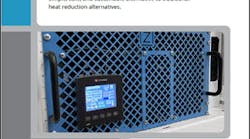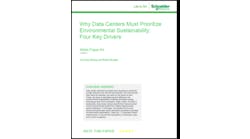Last week we launched an article series exploring the state of the grid and improving energy solutions for evolving digital infrastructure power needs. This week, we’ll explore why it’s time for the electric grid to be refreshed.
Get the full report.
Where some believe our grid is just one giant ecosystem, that’s not entirely the case. The electrical power grid that powers Northern America is not a single grid, but is divided into multiple wide area synchronous grids. The Eastern Interconnection and the Western Interconnection are the largest, while the three other regions include the Texas Interconnection, the Quebec Interconnection, and the Alaska Interconnection.
According to the Environmental Protection Agency (EPA), the electrical power transmission grid in the USA is made up of over 7,300 power plants. The architecture includes nearly 160,000 miles of high-voltage power lines and millions of miles of low- voltage power lines and distribution transformers, connecting 145 million customers throughout the country. It’s often referred to as the most massive operating machine globally.
As expansive as this might be, our electric infrastructure is aging, and it is being pushed to do more than it was initially designed to do. Modernizing the grid to make it “smarter” and more resilient through the use of cutting-edge technologies, equipment, and controls, like microgrids that communicate and work together to deliver electricity more reliably and efficiently can significantly reduce the frequency and duration of power outages, reduce storm impacts, and restore service faster when outages occur.
Source: CACurrent.com
Consumers can better manage their energy consumption and costs because they have easier access to their data. Utilities also benefit from a modernized grid, including improved security, reduced peak loads, increased integration of renewables, and lower operational costs.
As we mentioned earlier, the grid can certainly handle quite a bit. However, it’s not perfect, and it will go down. Generally, the go-to backup method for data center leaders will be generators. Sure, generators could get you up and running, but for how long? What can communities, cities, schools and universities, data centers, hyperscalers, and even edge leaders do to deploy more resilient power solutions above and beyond generators and traditional backup solutions?
Understanding Generators and Diesel Power
Since critical infrastructure was deployed, leaders did their best to ensure that these environments stayed operational. Diesel generators were the go-to solution for hospitals, manufacturing, data centers, cities, and more for the longest time. And, for a time, they did indeed fill a specific role: ensure resiliency in times of emergencies. However, these traditional diesel generators also came with some severe challenges.
A recent study shows that in the state of California, the number of permitted diesel backup generator systems in just two of the state’s 35 air districts soared to 23,000, representing more than 12GW of power, with many more unpermitted. When fired up to keep power flowing to homes, hospitals, data centers, industrial plants and support the grid, they produce dangerous levels of toxic pollution.
California Energy Commission staff stated during a 2021 meeting that 21,000 permitted systems produce carbon dioxide emissions on par with 95,000 vehicles on the roads. This also represents about 15% of California’s Grid Capacity.
Aside from pollution issues, many permitted, and unpermitted diesel generators are estimated to fail 20% of the time after a two-week gird outage. Studies by IEEE and others show that emergency diesel generators tend to fail regarding resiliency. Moreover, in some cases, the average downtime of these generators can be as high as 478.0 hours per failure. Is that something you can afford? Microgrids offer a much higher level of resiliency, and they’re better for the environment. Believe it or not, they can also offer better economics.
One of the most significant differences when analyzing traditional backup generators and microgrids is when it comes to continuous operations. Simple backup generators are not microgrids. Further, these generators sit idle most of the time, except for the periodic testing and occasional power disturbance. Diesel generators that sit idle for most of the year and do not provide grid services become an expensive drag on the data center operator’s balance sheet and income statement. Still, they are essential to mitigating operational risk in the data center. On the other hand, microgrids operate 24/7/365, managing and supplying energy to their customers.
Another critical point is working with greener and more sustainable power solutions. Many leading organizations have actively committed to reducing emissions and running more optimally for greener and cleaner power. However, working with traditional legacy generators can pose some serious environmental efficiency challenges. Most data center operators are in a class by themselves regarding environmental performance. Their focus on improved energy efficiency inside the data center has achieved tremendous improvement in the last decade. And the decarbonizing of energy supplies is unsurpassed by any other industry. The diesel generator fleet at most data centers runs counter to these achievements. Diesel fuel is high carbon-emitting, high particulate emitting, and higher NOx emitting than natural gas equivalent.
Like those from Enchanted Rock, new solutions significantly reduced emissions of common air pollutants and about half the carbon footprint compared to diesel. With NOx emissions of less than 1% of Standard Tier 2 diesel generation and less than 4% of Standard Tier 4 final diesel generation, Enchanted Rock generators are a much cleaner alternative than diesel.
Let’s pause here and focus on another key topic: resiliency.
Resiliency in the Digital Age
The latest Tier 4 Uptime Institute classification of onsite power generation means data centers need to be rated for prime power delivery. Because of this, many data center leaders working with the edge, primary locations, and other sites are now looking even more closely at microgrids and other onsite power generation technologies.
A significant misconception around microgrids is that you’re buying a piece of equipment, and that’s it. However, modern microgrid solutions go far beyond onsite physical power solutions. New offerings revolve around microgrid-as-a-service where you as the customer never have to interact with the system.
This includes system design and engineering services, construction and commissioning, and financing. Furthermore, this includes operations
as well as response field services. New as-a-service features include:
- 24/7 secure NOC
- Maintenance scheduling
- Asset management
- Market operations
- Billing and settlement
- Weekly site visits and loaded test runs
- 24/7 technician availability
Here’s the other key point — all of this is driven by data. Modern and sophisticated microgrid solutions produce data points that A.I. and machine learning engines then analyze. This data can provide information around anomalous behavior of parts if maintenance needs to be done, fluctuation in power that wasn’t expected, and even security metrics around access. Most of all, this information allows your microgrid to become predictive and prescriptive.
On the critical topic of resiliency, it’s also vital to understand how new weather patterns have impacted data center operations and outages. According to NOAA, in 2021, there were 18 weather and climate disaster events with losses exceeding $1 billion each to affect the United States. These events included one drought event, two flooding events, nine severe storm events, four tropical cyclone events, one wildfire event, and one winter storm event. Overall, these events resulted in the deaths of 538 people and had significant economic effects on the areas impacted. The U.S. has sustained 308 weather and climate disasters since 1980, where overall damages and costs reached or exceeded $1 billion. The total cost of these 308 events exceeds $2.085 trillion.
Source: NOAA
To put this into perspective, the total cost of U.S. billion-dollar disasters over the last five years (2016-2020) exceeds $600 billion, with a 5-year annual cost average of $121.3 billion, both of which are new records.
These concerns around resiliency, costs of an outage, and the requirement to look at new power sources have driven the modernization of power solutions in the digital infrastructure space. However, microgrids are not just another source of backup power generation, and modern microgrids have become far more advanced and intelligent.
Download the entire special report, “The State of the Grid: Improving Energy Solutions for Evolving Digital Infrastructure Power Needs” courtesy of Enchanted Rock to learn more. In our next article, we’ll examine the makings of a modern microgrid. Catch up on the previous article here.






